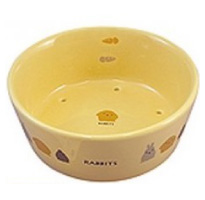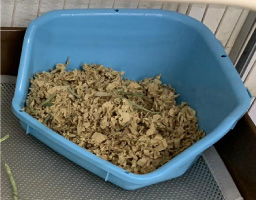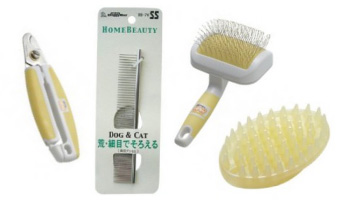
Food Bowl
Choose a heavy bowl with a wide, flat bottom. A sturdy ceramic bowl can last a long time and won’t tip over or gets chewed to pieces and accidentally swallowed (like a plastic bowl might), leading to gut obstruction.
|

Litter Box
With some patience and persistence, most rabbits can be litter trained. Place the litter box at the corner of the cage where the rabbit most frequently leaves his droppings. Put some bedding soaked with his urine into the litter box; the smell reminds the rabbit that this is the place to “go”. If the rabbit is peeing in every corner of the cage, use a small amount of white vinegar to wipe down the whole cage and remove the scent except for the litter box corner. Some litter boxes come with a wire or plastic rack with holes: make sure not to use it! The rack may trap urine leading to urine burn, and the rabbit’s toes can get caught in it causing broken bone. Fill the litter box with paper bedding instead, and clean it out at least once a day.
|

Grooming Tools
Nails should be trimmed with a specialized rabbit nail clipper at least once a month. Nails that are too long can break and bleed, and also poses a risk of scratching himself or the owner. Overgrown nails may also increase the risk of sore hocks. Brush a short-haired rabbit at least twice a week, and long-haired rabbit should be brushed daily. During shedding seasons, all rabbits regardless of hair length must be brushed thoroughly on a daily basis, since excess fur can be ingested and cause gut blockage. Metal fine tooth combs can be used for all breeds of rabbit, while needle combs and rubber massage brushes may also be used in addition to the metal comb for rabbits with long or dense fur.
|
